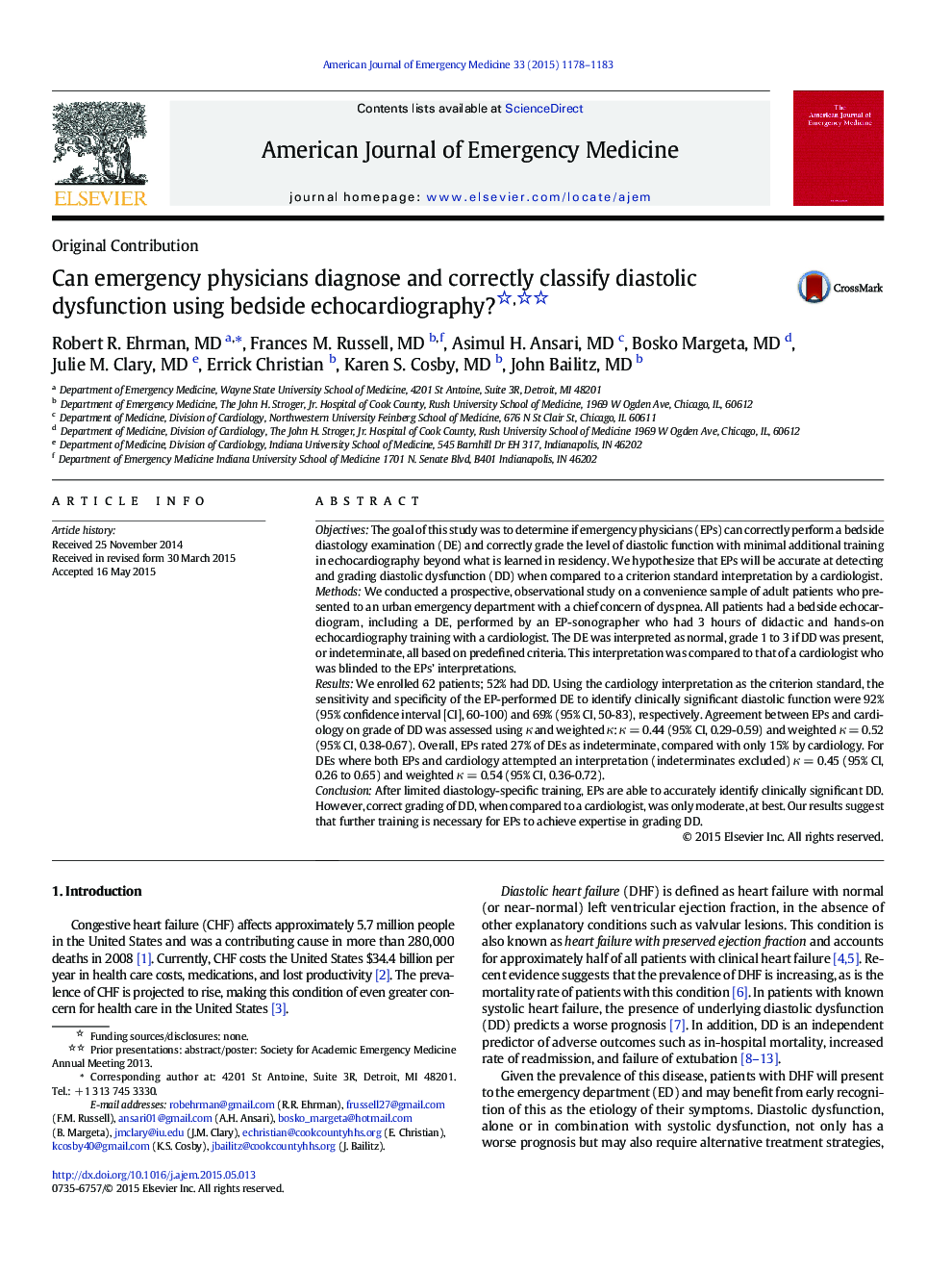| کد مقاله | کد نشریه | سال انتشار | مقاله انگلیسی | نسخه تمام متن |
|---|---|---|---|---|
| 3223891 | 1588102 | 2015 | 6 صفحه PDF | دانلود رایگان |
ObjectivesThe goal of this study was to determine if emergency physicians (EPs) can correctly perform a bedside diastology examination (DE) and correctly grade the level of diastolic function with minimal additional training in echocardiography beyond what is learned in residency. We hypothesize that EPs will be accurate at detecting and grading diastolic dysfunction (DD) when compared to a criterion standard interpretation by a cardiologist.MethodsWe conducted a prospective, observational study on a convenience sample of adult patients who presented to an urban emergency department with a chief concern of dyspnea. All patients had a bedside echocardiogram, including a DE, performed by an EP-sonographer who had 3 hours of didactic and hands-on echocardiography training with a cardiologist. The DE was interpreted as normal, grade 1 to 3 if DD was present, or indeterminate, all based on predefined criteria. This interpretation was compared to that of a cardiologist who was blinded to the EPs’ interpretations.ResultsWe enrolled 62 patients; 52% had DD. Using the cardiology interpretation as the criterion standard, the sensitivity and specificity of the EP-performed DE to identify clinically significant diastolic function were 92% (95% confidence interval [CI], 60-100) and 69% (95% CI, 50-83), respectively. Agreement between EPs and cardiology on grade of DD was assessed using κ and weighted κ: κ = 0.44 (95% CI, 0.29-0.59) and weighted κ = 0.52 (95% CI, 0.38-0.67). Overall, EPs rated 27% of DEs as indeterminate, compared with only 15% by cardiology. For DEs where both EPs and cardiology attempted an interpretation (indeterminates excluded) κ = 0.45 (95% CI, 0.26 to 0.65) and weighted κ = 0.54 (95% CI, 0.36-0.72).ConclusionAfter limited diastology-specific training, EPs are able to accurately identify clinically significant DD. However, correct grading of DD, when compared to a cardiologist, was only moderate, at best. Our results suggest that further training is necessary for EPs to achieve expertise in grading DD.
Journal: The American Journal of Emergency Medicine - Volume 33, Issue 9, September 2015, Pages 1178–1183
